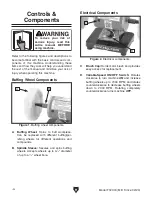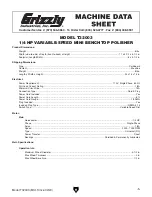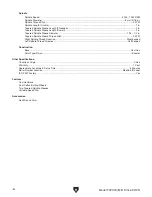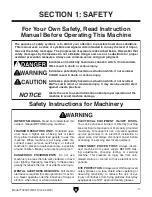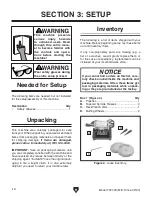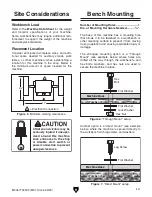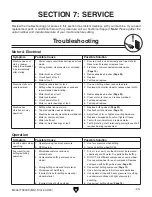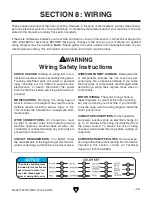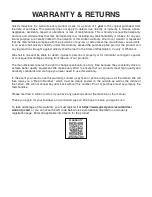
-18-
Model T32003 (Mfd. Since 02/20)
Selecting
Buffing Wheels
Buffing wheels are available for most types of
metals and for different stages in the buffing pro-
cess. Below are pictures and descriptions of com-
mon wheel types:
Loose Muslin
Soft
feather-edged
muslin stitched togeth-
er near the center
leaves the outer edge
to provide a wide angle,
fine polishing surface.
Perfect for polishing
stainless steel, chrome,
gold or silver.
Laminated Sisal
Designed for rough
cutting, sisal works
well with various steels,
copper,
aluminum,
and brass to remove
scratches and prepare
the piece for polishing.
Spiral Sewn
Consist of layers of
100% unbleached cot-
ton sheeting that are
spiral sewn
1
⁄
8
" apart.
Works well for initial
polish on brass, stain-
less steel, aluminum,
bronze and cast iron.
To install/remove buffing wheel:
1. DISCONNECT MACHINE FROM POWER!
2. Remove buffing wheels by holding shaft sta-
tionary and turning left wheel clockwise off of
shaft and right wheel counterclockwise.
The tapered spindle sleeves on each end of the
spindle make it easy to swap out different buffing
wheels for different projects. Their tapered design
also allows for a range of bore thicknesses, espe-
cially useful for polishing wheels that may break
down after a lot of polishing use. If the bore of a
wheel wears and becomes larger, simply install it
farther onto the spindle sleeve.
Installing/Removing
Buffing Wheel
3. Thread a buffing wheel onto either tapered
spindle sleeve (see
Figure 14).
Figure 14. Buffing wheel threaded onto tapered
spindle sleeve.
Buffing Wheel
(1 of 2)
Note: Left spindle sleeve has left-hand
threads so buffing wheel threads counter-
clockwise onto sleeve.
Summary of Contents for T32003
Page 32: ......

